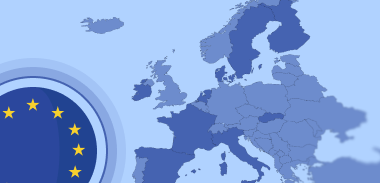Table of Contents

The General Data Protection Regulation (GDPR) is the gold standard of data privacy laws worldwide. While it applies uniformly across all EU member states, the level of enforcement, rigor, and interpretation varies significantly from country to country.
Some national Data Protection Authorities (DPAs) have emerged as especially strict enforcers handing down hefty fines, conducting frequent audits, and setting precedents in privacy law. For businesses operating across the EU, knowing where GDPR enforcement is toughest is critical to minimizing compliance risks.
In this blog, we rank the 10 strictest EU countries in terms of GDPR enforcement and explain why they matter.
Why GDPR Enforcement Varies by Country
Although GDPR is an EU regulation, enforcement is left to national DPAs, which can:
- Conduct audits and investigations
- Issue administrative fines
- Provide interpretive guidance
- Handle data breach complaints
Each DPA has its own budget, staffing levels, and enforcement priorities, which means your GDPR risk profile can shift depending on where you operate.
The EU’s Top 10 Strictest GDPR Enforcers (Ranked)
1. France
Regulator: CNIL (Commission Nationale de l’Informatique et des Libertés)
Why It’s Strict:
France’s CNIL is one of the most aggressive GDPR enforcers in Europe. It has led the charge in cookie consent enforcement, penalizing major platforms for opaque practices.
Key Areas:
- Cookie compliance
- Consent management
- Big Tech accountability
Notable Action:
- €150 million fine against Google for non-compliant cookie banners
- €60 million fine against Facebook
2. Germany
Regulator: 16 regional Data Protection Authorities (Länder DPAs)
Why It’s Strict:
Germany’s unique federal model means each state has its own DPA, leading to highly active and localized enforcement. It is particularly strict on workplace monitoring and data minimization.
Key Areas:
- Employee surveillance
- IT security
- Local government data use
Notable Action:
- €35.3 million fine against H&M for unlawful employee profiling
3. Ireland
Regulator: Data Protection Commission (DPC)
Why It’s Strict:
Ireland is the lead regulator for many global tech firms (Meta, Google, TikTok) under GDPR’s “One-Stop-Shop.” Though once criticized for delays, it now delivers some of the highest-value GDPR fines in Europe.
Key Areas:
- Cross-border data transfers
- Transparency
- Platform regulation
Notable Action:
- €1.2 billion fine against Meta for transatlantic data transfers
4. Spain
Regulator: Agencia Española de Protección de Datos (AEPD)
Why It’s Strict:
The AEPD is one of the most active regulators in terms of enforcement volume. It has issued numerous fines, targeting sectors like telecommunications, surveillance, and advertising.
Key Areas:
- Consent and marketing
- Video surveillance
- Breach notifications
Notable Action:
- Imposed several significant fines, including €5 million for non-compliance with general data protection principles
5. Italy
Regulator: Garante per la Protezione dei Dati Personali
Why It’s Strict:
Italy’s DPA is known for its firm stance on biometrics, marketing, and data security, especially when public services or facial recognition are involved.
Key Areas:
- Facial recognition and AI
- Healthcare data
- Telecommunications
Notable Action:
- €20 million fine against Clearview AI for processing biometric data without consent
6. Netherlands
Regulator: Autoriteit Persoonsgegevens (AP)
Why It’s Strict:
The Dutch regulator targets systemic privacy failures, with a strong focus on automated profiling, tax systems, and public sector data use.
Key Areas:
- Algorithmic fairness
- Data protection by design
- Tax and welfare systems
Notable Action:
- €3.7 million fine against Dutch Tax Authority for discriminatory profiling
7. Austria
Regulator: Datenschutzbehörde (DSB)
Why It’s Strict:
Austria’s DSB is legally precise and proactive in digital surveillance and cookie enforcement. It was an early mover in interpreting Schrems II impacts on international data transfers.
Key Areas:
- Cookie consent
- International data transfers
- Analytics tools
Notable Action:
- Ruling that Google Analytics violates GDPR due to data transfer to the U.S.
8. Sweden
Regulator: Integritetsskyddsmyndigheten (IMY)
Why It’s Strict:
Sweden takes a balanced but firm approach, emphasizing breach notifications and proper governance in healthcare and education.
Key Areas:
- Data breach transparency
- Health and public sector data
- EdTech accountability
Notable Action:
- €5 million fine against Spotify for failing to adequately inform users
9. Denmark
Regulator: Datatilsynet
Why It’s Strict:
Denmark enforces strict controls over public IT infrastructure, especially data breach procedures and improper communications.
Key Areas:
- Email security
- Public sector IT
- Fast-track enforcement actions
Notable Action:
- Issued guidance and enforcement actions related to insecure email use in municipal communications
10. Finland
Regulator: Data Protection Ombudsman (Tietosuojavaltuutettu)
Why It’s Strict:
Finland is strong on privacy in education and public services, offering comprehensive guidance and thorough investigations into school surveillance and children’s data use.
Key Areas:
- Educational privacy
- Children’s rights
- Municipal data
Notable Action:
- Oversight and rulings requiring school systems to reform student data processing policies
Final Takeaway
GDPR applies EU-wide but its enforcement isn’t one-size-fits-all. If your business operates across multiple EU countries, it’s essential to:
- Understand each country’s enforcement culture
- Align with national DPA guidance
- Stay proactive with documentation, consent, and security
The stricter the regulator, the higher the bar for accountability. When in doubt, treat your highest-risk market as your compliance benchmark.
